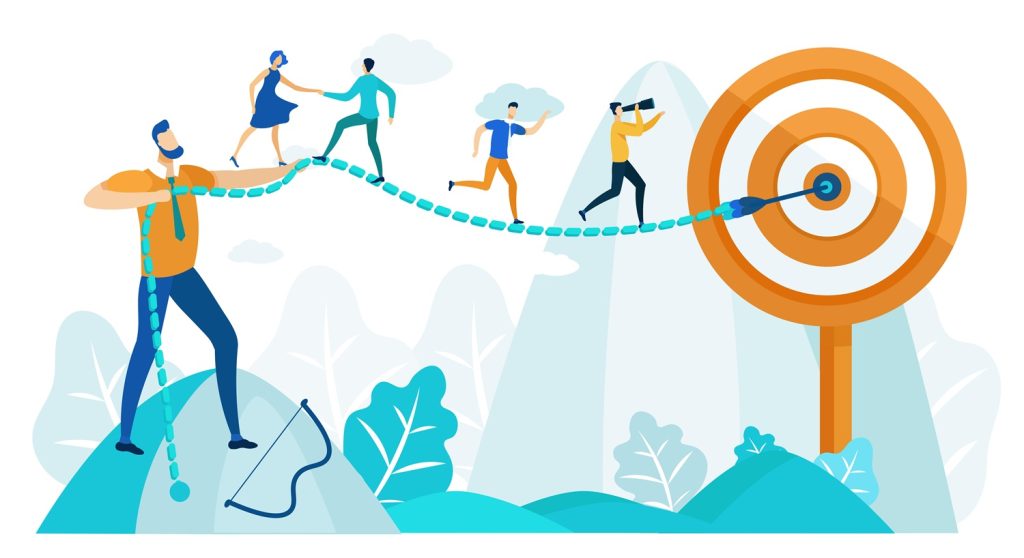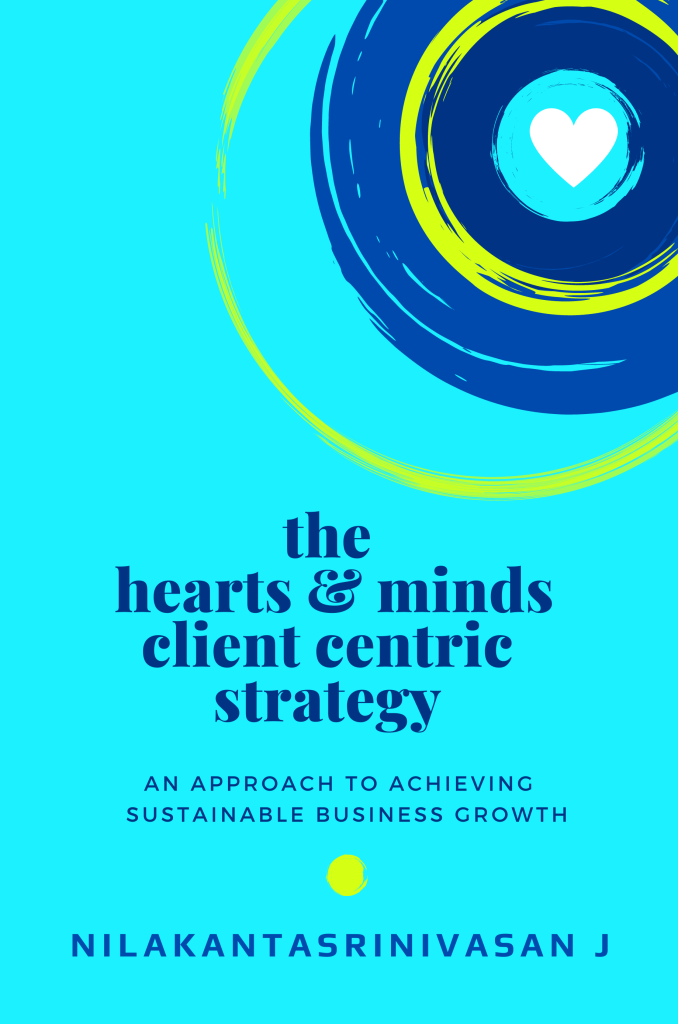World Gratitude Day can be the launchpad for an enduring client-centric culture.
Embracing Gratitude as a Strategic Asset
World Gratitude Day on September 21 offers a moment for corporate leaders like you to pause and recognize the people who fuel your success. Gratitude isn’t just a warm feeling-it’s a strategic lever that deepens trust, amplifies loyalty, and ignites referrals. By weaving genuine appreciation into your client engagement playbook, you transform routine transactions into lasting partnerships rooted in mutual respect and shared purpose.
I would like to express my gratitude to you, “Thank you for your trust and partnership-your success inspires everything we do.”

7 Creative Ways to Celebrate Your Clients on World Gratitude Day
1. Spotlight Client Success Stories
Host a “Client of the Month” feature across your newsletter, blog, or intranet. Highlight tangible outcomes-revenue growth, process improvements, user adoption-that your clients have achieved with your partnership. Sharing their wins publicly not only honors their hard work but reinforces your collective impact.
2. Launch a Personalized Video Shout-Out Campaign
Ask your leadership team to record short, candid thank-you videos for top clients. Stitch them into a heartfelt montage and distribute via email or social media. Seeing real faces and hearing authentic messages will resonate far more than templated emails. Use AI to make it creative.
3. Send Handwritten Artisanal Thank-You Notes
Upgrade the traditional greeting card by commissioning a local calligrapher or artisanal stationery house. Include a specific reference-like the campaign you co-launched or the shared milestone you crossed. Elevating the medium shows you’ve invested thought, time, and care.
4. Host a Virtual Client Appreciation Experience
Design a 30- to 45-minute online event with a panel of experts, client roundtables, or a live workshop on a trending industry topic. Offer an interactive Q&A and digital swag. This collective celebration doubles as a learning forum, reinforcing your role as both partner and thought leader.
Free Download
Get your copy of E-Book “The Hearts & Minds Client Centric Strategy” on how to achieve sustainable business growth . It contains cases, examples, detailed implementation approach along with ideas to achieve sustainable growth, especially for B2B firms. (Pages : 51)
5. Amplify Client Voices Through Co-Created Content
Invite clients to co-author blog posts, case studies, or LinkedIn articles that showcase collaborative insights. Position them as industry pioneers, interview them on podcasts, or film on-site profiles. Sharing the spotlight builds their brand while cementing your collaborative identity.
6. Plant a Tree or Donate in Their Name
Align gratitude with purpose by making a charitable gift or planting trees for each client partnership milestone. Present clients with a certificate and map of reforestation efforts. This eco-driven gesture not only expresses thanks but also mirrors your commitment to sustainable impact.
7. Build a Digital Gratitude Wall
Create an interactive microsite or intranet page where employees and clients can post short thank-you notes, GIFs, or images. Integrate social sharing so everyone can rally around the wall. The live feed sparks ongoing engagement long after September 21 has passed.
Measuring Impact and Sustaining Momentum
Capturing the ROI of gratitude initiatives is simpler than you might think. Track metrics such as social media engagement on your thank-you posts, open and click-through rates for campaign emails, Net Promoter Score changes, and referral volumes in the quarter following your World Gratitude Day activities. Share these results internally to galvanize your teams and refine future celebrations.
Turning Gratitude into Growth
World Gratitude Day can be the launchpad for an enduring client-centric culture. Embed one of these initiatives into every quarter’s calendar-rotate the ideas, scale the ones that resonate most, and weave feedback loops directly into your client success processes.
When appreciation becomes a habit rather than a holiday stunt, your clients won’t just stay-they’ll champion your brand, advocate for your solutions, and contribute to an ecosystem of mutual success.
Start planning now, because the authentic connections you build on September 21 will ripple through the rest of the year and beyond.
Which of the 7 ideas do you want to implement this year?
#nilakantasrinivasan-j #canopus-business-management-group #B2B-client-centric-growth #client-centric-culture #World-gratitude-day

Traditional L&D has data deficit
Historically, Learning & Development (L&D) has operated more as a support function than a strategic one. It is focused on delivering training rather than measuring its impact. This legacy mindset has led to minimal investment in data infrastructure. According to the Learning and Performance Institute, over 50% of L&D professionals lack confidence in using data effectively, and performance impact analytics ranks among the lowest skills in the field.
There are several factors that contribute to this data scarcity:
- Most L&D teams measure only metrics like completion rates, satisfaction scores, which don’t reflect actual learning transfer or business impact.
- L&D teams are often staffed with instructional designers and facilitators and not data analysts.
- LMS are designed for delivery and not analytics.
- Data is siloed across HRIS, LMS, and performance systems, making integration complex.
The result is that L&D struggles to demonstrate ROI, personalize learning, or align with business strategy.
Traditional L&D Data Collected is just not enough
Most L&D functions collect only basic operational data such as:
- Course completions
- Assessment scores
- Learner feedback
- Training hours logged
While these are useful for tracking activity, this data lacks depth. It doesn’t answer any of the following questions that business leaders pose:
- Did the training improve performance?
- Which skills were actually acquired?
- How does learning correlate with business KPIs?
A 2022 study by Cognota found that only 44% of organizations track learner analytics, and fewer than 20% use predictive or prescriptive analytics. Without richer data—like pre/post performance, behavioral change, or skill application, L&D remains reactive and disconnected from strategic outcomes.
Four Levels of Maturity in L&D Data Architecture
If organizations have to evolve from this situation, there needs a more structured vision from CHROs and CLOs (Chief Learning Officers). There are 4 distinct stages of data maturity in L&D that are important to consider. Evaluate where your organization stacks against this.
Level 1: Basic Measurement
- Tracks completions, attendance, and satisfaction.
- No analysis or strategic linkage.
- Example: “4,000 employees completed the compliance module.”
Level 2: Data Evaluation
- Begins to assess effectiveness.
- Compares metrics across cohorts or time.
- Example: “Sales onboarding completion rates rose 20% after redesign.”
Level 3: Advanced Evaluation
- Explores causal relationships.
- Links learning to performance outcomes.
- Example: “Customer satisfaction improved 12% in teams with leadership training.”
Level 4: Predictive & Prescriptive Analytics
- Uses data to forecast outcomes and guide decisions.
- Enables personalization and strategic alignment.
- Example: “Employees with X learning path are 3x more likely to be promoted within 12 months”.
Unfortunately, only 7% of organizations currently operate at Level 4 maturity, while 81% remain in Levels 1–2, according to Watershed’s global survey.
Free Download
Contains data file used in data cleaning tutorial. Can be downloaded for your practice.
Of all the steps in Analytics, data cleaning & preparation plays a very crucial for the success of the entire exercise. In fact, if not done well, it can sabotage the whole objective. Through this video (https://youtu.be/dxTesoAbb10) and practice file here, you will get hands-on practice on a routine used to clean & prepare data. For convenience, we will work with a complex data set by reasonably small in size.

Strategic Insights Enabled by Clean, Comprehensive L&D Data
When data hygiene and architecture are robust, L&D becomes a strategic engine. Here’s how Chief Learning Officers can add value to the business with good data architecture.
- Skill Gap Analysis : Identify which roles or teams lack critical capabilities. For example, a global logistics firm used xAPI data to map skill gaps across 12 regions, enabling targeted upskilling.
- Learning ROI Measurement : Link training to performance metrics (e.g., sales, retention). For example, Caterpillar tracked spikes in video training usage during crises and adjusted licensing to meet demand.
- Personalized Learning Paths : Recommend content based on role, performance, and goals. For example, a tech firm used learner behavior data to reduce onboarding time by 30%.
- Program Optimization : Refine content based on engagement and outcomes. For example, Reviewing top-performing leadership modules led to a 40% increase in manager satisfaction scores.
- Strategic Alignment : Align learning with business priorities (e.g., innovation, compliance). For example, a bank linked training data to customer service KPIs, improving NPS by 15%.
The Role of CHRO and Chief Learning Officer
To unlock L&D’s full potential, data architecture must be a C-suite priority. The CHRO and Chief Learning Officer (CLO) play pivotal roles. The CHRO ensures integration with HR systems, workforce planning, and talent analytics and champion data governance and cross-functional collaboration. The CLO defines the learning strategy, selects analytics tools, and builds data literacy within L&D teams.
Together, they must:
- Establish a data strategy aligned with business goals.
- Invest in platforms that support xAPI, LRS, and advanced analytics.
- Upskill teams in data interpretation and storytelling.
- Foster a culture of evidence-based decision-making.
As IBM’s Chief Data Officer’s Playbook notes, organizations with mature data leadership are 1.9x more likely to outperform competitors. In L&D, that means moving from “training delivery” to “capability acceleration.”
#nilakantasrinivasan-j #canopus-business-management-group #B2B-client-centric-growth #client-centric-culture #L&D #Learning-Analytics
And how it benefits B2B organizations in achieving client centric growth
If I tell you that one thing you focus on can give you a 13% increase in profit margins, not only that, it can also lift customer loyalty by 8%, and what’s more, your products can grow two times faster; would you be interested in it?
A resounding yes, right!
What is it? It’s Sustainability.
The points above illustrate that sustainability is not just a moral imperative but also a strategic advantage for B2B organizations focused on client-centric growth.
For example, Microsoft, being a large B2B enterprise, has committed to and benefited from sustainability. Nike is another large consumer brand that has gone gung-ho on sustainability.
They have laid out 10 Principles for Circular Designs for creating sustainable products that I think many of us can imitate for the good of the world and for business benefits too. I’m really impressed by the simplistic appeal of the principles.

Nike’s 10 Principles of Circular Designs
Let’s see, what are they?
- Material Choices: Selecting low-impact materials that use pre- and post-consumer recycled content. As a result, Nike has increased the use of recycled materials, such as in their Flyknit products, that are made from yarn made from recycled plastic bottles.
- Cyclability: Designing products that can be easily recycled at the end of their life. For example, Nike’s Space Hippie shoes are made from recycled materials and are designed to be disassembled and recycled again.
- Waste Avoidance: Minimizing waste during the production process. For example, Nike’s Move to Zero initiative has significantly reduced manufacturing waste, with many facilities achieving zero waste to landfill status. Their Flyleather is made from at least 50% recycled natural leather fiber, reducing waste from leather manufacturing.
- Disassembly: Creating products that can be easily taken apart for recycling or repair. Nike’s ISPA (Improvise, Scavenge, Protect, Adapt) line features shoes that can be disassembled to replace worn-out parts.
- Refurbishment: Designing products that can be refurbished and given a second life. Nike’s Refurbished program takes gently worn shoes, cleans them, and resells them at a lower price.
- Green Chemistry: Using safer chemicals in the production process. Nike’s commitment to green chemistry includes eliminating hazardous chemicals from their supply chain, thereby improving safety for workers and reducing environmental impact.
- Durability: Creating long-lasting products to reduce the need for frequent replacements. Nike’s Air Max shoes are known for their durability and long lifespan.
- Versatility: Designing products that can be used in multiple ways or for different purposes. Nike’s Tech Pack collection features versatile clothing that can be worn in various settings.
- Packaging: Reducing the environmental impact of packaging. Nike’s Move to Zero initiative includes using recycled materials for shoe boxes and reducing packaging waste.
- New Models: Innovating new business models that promote sustainability. Nike’s subscription service for kids’ shoes, Nike Adventure Club, allows parents to return outgrown shoes for recycling.
Role of Design Thinking in creating the 10 Principles
Interestingly, Design Thinking played a crucial role in creating Nike’s 10 Principles of Circular Design by fostering a user-centered, innovative, and iterative approach. Here’s how Nike used Design Thinking:
- Empathy: Understanding the needs and challenges of both consumers and the environment. Nike engaged with athletes, designers, and sustainability experts to identify key issues and opportunities.
- Define: Clearly articulating the problem of environmental impact and waste in the fashion industry. This step helped Nike focus on creating solutions that address these specific challenges.
- Ideate: Generating a wide range of ideas for sustainable design. Nike collaborated with institutions like Central Saint Martins to brainstorm and develop innovative concepts.
- Prototype: Creating tangible prototypes to test and refine ideas. For example, Nike’s Flyknit and Space Hippie shoes were developed through multiple iterations to ensure they met sustainability goals.
- Test: Evaluating prototypes with real users and gathering feedback. Nike tested their products with athletes and consumers to ensure they were both functional and sustainable.
- Iterate: Continuously improving designs based on feedback and new insights. Nike’s commitment to sustainability involves regularly revisiting and refining their principles and products.
I feel only because Nike applied Design Thinking they were able to create a comprehensive set of principles that guide their efforts towards circularity and sustainability. Design thinking framework is really an underutilized framework for many B2B organizations that has a lot of potential for driving business growth.
Here’s what we do with Design Thinking for B2B companies
#nilakantasrinivasan-j #canopus-business-management-group #B2B-client-centric-growth #Nike #Nike-circular-designs #design-thinking

Integrity plays a crucial role in client-centric business growth. When a business operates with honesty and strong moral principles, it builds a foundation of trust with its clients. Clients who trust a business are more likely to remain loyal, provide repeat business, and refer others, driving sustainable growth. Integrity ensures that the business consistently delivers on its promises, maintains transparency, and treats clients with respect. This not only enhances the company’s reputation but also creates a positive and ethical work environment, ultimately leading to long-term success and profitability.
#nilakantasrinivasan-j #canopus-business-management-group #B2B-client-centric-growth

A winning mindset in business growth revolves around prioritizing the needs and satisfaction of clients. This mindset encourages continuous improvement, adaptability, and a proactive approach to solving client challenges. With this mindset, embrace challenges and find ways to address them proactively. Ultimately, a winning mindset aligns your business success with the client success, driving mutual growth and long-term partnerships.
#nilakantasrinivasan-j #canopus-business-management-group #B2B-client-centric-growth

Prioritizing the client’s needs ensures that every interaction is meaningful and impactful. By deeply understanding their preferences and challenges, businesses can tailor their services to create unparalleled experiences. This is truly the spirit of client-centric approach that fosters loyalty and trust. In a world where choice is abundant, being genuinely client-focused sets a company apart, making every engagement significant and memorable.
#nilakantasrinivasan-j #canopus-business-management-group #B2B-client-centric-growth

In the realm of handling clients in #B2B businesses like #manufacturing, #Industrial, #IT, #ITES, Tech, Telecom & other services, a vital lesson emerges from the transient nature of all things like deliveries, orders, escalations, daily interactions and heated moments. This “Client Centricity: Transient lesson” underscores the importance of cherishing prosperous moments and relishing them to the utmost with your colleagues and your clients. A true #clientcentric journey in B2B is about making it a practice to commemorate the small successes of your organization and your clients’ (though you may not be part of it). Simultaneously, during the challenging phases, it’s crucial to remind yourself that difficulties are not perpetual. Just as clouds eventually yield to the sun’s radiance, adversities too shall pass. But at the end of it, your relationship with your client will be stronger. So nurture patience and maintain faith in the process, knowing that brighter days are on the horizon.
#nilakantasrinivasan-j #canopus-business-management-group #B2B-client-centric-growth
Every employee should embrace the following 7 acts of client centric professional. This will help in delivering superior client service and meeting company goals

1. Understand Clients with Empathy
Understanding clients with empathy is the first act of client centric professional and is important for the growth of any organization because it helps to build strong and lasting relationships with them. When you understand and empathize with your clients, you are able to respond to their needs, wants and concerns in a meaningful and personal way. This helps to establish trust and creates a sense of loyalty, which is crucial for maintaining and growing your client base.
2. Take Ownership for their needs
Taking ownership of a customer’s needs is the 2nd act of a client centric professional because it demonstrates a commitment to providing exceptional customer service. By taking ownership of a customer’s needs, the professional is signaling that they are invested in resolving the customer’s problem or meeting their requirements. This helps to build trust and confidence with the customer and can lead to improved customer satisfaction and loyalty.
3. Establish Agile, Fair, Scalable, Transparent and Sustainable Processes
Processes play a critical role in becoming client-centric because they help organizations to understand, manage and deliver value to their clients. . By streamlining operations, mapping the customer journey, implementing feedback mechanisms, and supporting continuous improvement, companies can build a culture that is focused on meeting the needs of their clients.
4. Collaborate internally & externally
Collaboration internally & externally plays a critical role in improving client centricity by enabling organizations to align their efforts towards meeting the needs and expectations of their clients. By working together, organizations can develop a more comprehensive understanding of their clients, provide more effective and personalized solutions, and continuously improve their client-centric approach.
5. Consistently deliver on promises
Consistently delivering on promises is critical in client centricity because it builds trust, demonstrates reliability, increases satisfaction, enhances reputation, and mitigates risk.
6. Continuously improve things for the clients
Continuously improving things for clients requires a commitment to ongoing learning, flexibility, and adaptability in the face of challenges and uncertainty. It may require businesses to invest in resources, such as staff, technology, or data, to support their improvement efforts.
7. Serve with passion
Serving with passion means that an individual is deeply committed to delivering high-quality service and meeting the needs of their customers. This attitude is a critical component of being client-centric, which means that an individual is focused on understanding and meeting the needs of their clients.
We conduct interactive “7 Acts of Customer Centric Professional” workshop in Chennai, Bangalore, Mumbai, Delhi and across India. To know more about the workshop, visit our page
#nilakantasrinivasan-j #canopus-business-management-group #B2B-client-centric-growth
Unlocking authentic communication beyond the hidden pitfalls of corporate buzz words

In the bustling world of B2B organizations, communication is key. The ability to convey ideas clearly and effectively can make or break a business deal. However, sometimes, in the quest for efficiency and professionalism, corporate phrases creep into our everyday language. Clients use them, and internally, our leaders also use them often. I’m referring to phrases like “analysis-paralysis,” “boil the ocean,”, etc. Some of us develop such fondness for such phrases that not a day passes without using them!
While they may sound impressive, these phrases can often obscure the real issues, hinder growth, and compromise client-centricity. Many times, these phrases become part of the persuasion tactics loaded with hidden agendas.
Ultimately, leaders have to earn the trust of their team and their clients. In turn, clients have to earn the trust of their supplier partners. That is B2B.
What is the implied meaning of such phrases when used by your clients and by our leaders? That is what you will read below.
I want to make it clear that there is nothing wrong with using these phrases. In fact, I too use many of them. When used often, it is a sign of personal bias, something that all of us have to watch out for.
I have a dozen such phrases for you here and 7th is my favorite because I hear it all the time.
“Analysis – Paralysis” – Excessive Delays
The phrase “analysis-paralysis” can be used to criticize excessive analysis or decision-making delays, but it may oversimplify the need for thorough consideration in complex situations. It can also be used to control the direction of progress if it is unfavorable or if the outcome may be unpleasant. In essence, this can be used to identify the real problems of the clients or business.
“Dive deep” – The Analysis Abyss
The exact opposite of “Analysis – Paralysis”, leaders want you to continue the analysis because you haven’t reported what they wanted. When taken at its face value, “Dive deep” may encourage excessive micromanagement or deeper analysis. But all it means is that leaders are not yet ready to act based on your report.
“Let’s look at the Big Picture” – Avoiding Immediate Concerns
The phrase “big picture” is often used to encourage long-term thinking, which is important. However, it can be a convenient way to avoid addressing pressing issues. Focusing too much on distant goals can cause us to overlook immediate concerns, leaving clients dissatisfied.
“Boil the Ocean” – The Perceived Folly
The exact opposite of “Let’s look at the big picture”, labeling a project as attempting to “boil the ocean” implies that it’s too ambitious to succeed. In reality, in most cases, it is meant to keep the team from exploring an area that the leader is not comfortable with. While caution is necessary, innovation sometimes requires big leaps.
“Let’s take this offline” – The Evasion Tactic
Moving discussions “offline” might seem like a way to streamline meetings, but it can also be a tactic to avoid transparency or accountability. In most cases, such offline discussions never happen, so the item is completely ignored. Important conversations should be had openly to ensure everyone is on the same page.
“I’m listening” – The Facade of Engagement
Saying “I’m listening” can be a hollow gesture when not followed by genuine understanding and action. Actually, this is an oxymoron. It is also used as a tactic to say, I’m not going to act on this, though I know it. If used in front of the client, this can be harmful to the relationship. Active listening is vital in a client-centric approach, and mere lip service can harm relationships.
“Want it as of yesterday” – Rushing to Mediocrity or No Planning
Urgency is important, but pushing for immediate results can lead to rushed, subpar work. In my personal experience, every time a client or prospect says this, clearly they don’t have any plan at all, whatsoever. Quality should never be sacrificed for speed, especially in a client-centric model.
“Give 110%” – The Culture of Overwork
Though often misunderstood as striving for excellence, leaders use this to convey that they are not happy with your progress. But often employees misunderstand and end up overworked and burned out. It’s crucial to have and set realistic expectations.
“Low Hanging Fruit” – Oversimplifying Challenges
While tackling easy tasks first can be efficient, referring to them as “low-hanging fruit” may downplay the complexity of a project. This phrase is often used by leaders to push a big-ticket item and get it done quickly in their eagerness to see quick results. But it can lead to a higher failure rate and botched execution due to a lack of comprehensiveness and preparation. Clients may start to perceive your organization as making false promises.
“Thinking outside the box” – The Illusion of Innovation
When someone tells you to “think outside the box,” they might be inadvertently stifling creativity. This phrase can pressure employees into unrealistic levels of innovation, pushing them towards ideas that may not be practical or beneficial for the client.
“At the end of the day” – Oversimplifying Complexity
While “at the end of the day” summarizes key points, it can also oversimplify complex issues, potentially neglecting crucial client concerns. It is smart way to neglect everything that is not convenient and stick to what one thinks needs to be done.
“Take the lead” – Pushing Premature Leadership
It is another smart way to nudge the decision making process. Leaders either use this shoo-away responsibility by proactively asking someone else to take the lead or keep it within their fold by encouraging one of their guys to take the lead. It’s a hint that the boss wants this to be done our way! On a serious note, encouraging someone to “take the lead” can be beneficial, but it may also pressure individuals into roles or responsibilities they are not ready for.
In the world of B2B organizations, clear and transparent communication is paramount. Corporate phrases, although well-intentioned, can often hinder collaboration, morale, growth, and client-centricity. To truly serve clients and foster growth, leaders must strike a balance between professionalism and authenticity. And finally, remember, it’s not just about what you say, but how you say it.
Evaluate Client Centricity of your team
An organizational assessment to understand the behavioral and cultural maturity of an organization across 8 dimensions using 4 maturity levels. Unlike traditional assessments, in this survey, participants are given a few random scenarios and have to select what they will do or feel in each of them.
If you are interested to know more, you can also contact us
#nilakantasrinivasan-j #canopus-business-management-group #B2B-client-centric-growth
Role of Facilitation in Client Centric Business Growth

Recently, the Managing Director of a large tech firm in India invited me to their annual strategy session to be an observer.
One of the items on the agenda involved addressing some of the key challenges faced by clients and partners. There were 4 challenges identified, and two of the P&L business leaders were tasked with facilitating two separate but concurrent group discussions on these. Both of them were seasoned industry professionals with 20+ years of experience. For the task at hand, each of them had to facilitate a group of 20+ people, dwell on 2 organizational challenges, brainstorm, and come up with some ideas to overcome them. As they were already running late, the MD gave both teams an hour for a break-out session, after which each leader had to report out. I split my time between both teams and observed the proceedings.
One of the groups started off well but soon went all over the place. They debated a lot on various related issues, daily challenges, client behavior, industry trends, etc., and spent nearly 45 mins on the first topic alone. Realizing this and in exhaustion, they swiftly covered the second topic. The team requested more time and was granted it because even the second team was running late! The leader, on his part, allowed the team to contribute as he was amiable. He noted down all their points on the white board. At times, the team went on tangents, resulting in a few parallel discussions.
While the first team lacked direction and guidance, the second team lacked enthusiasm. Hardly anyone was contributing. Some of them in the group were known to me, so I can say it was unusual. Their white board was nearly empty, except for two or three points. The leader was certainly in command, and he was moving from one person to another, asking them for their points. I got curious because there’s nothing on the board, but people are giving a lot of points. Clearly, something was wrong.
What I found was that the leader would scrutinize each point while involving others in the group, then immediately conclude that there was an issue of adherence, behavior, training, process, etc., thereby instantly providing a resolution. As time passed, hardly anyone opened up. It turned into a pseudo-review. At one point, he realized there was nothing on the board, so he loosened up a bit, but there was no improvement, for everyone had tread safely. Why would anyone take chances with an alpha leader?
I was bewildered. What was meant to engage the team and come up with acceptable solutions turned out to be festered. Later on, the MD expressed his displeasure to his leaders.
Why is Facilitation 360-degree Skill?
Whether you are a fledgling leader or an incumbent, regardless of your level, domain, or sector, facilitation skills are absolutely vital. It impacts many aspects of strategic and daily management. It is needed in situations involving clients and internal colleagues. That is why I consider it a 360-degree skill. Here are a few of those situations where you will need it the most:
- Regular Meetings and Discussions
- Conflict resolution between teams and with clients
- Tough call decisions
- Project planning and strategic planning
- Change Management
- Solution Design
- Whiteboard discussions
- Problem-Solving Sessions
- Crisis Management
- Innovation and Ideation
- Customer feedback and focus groups
- Cross-Functional Collaboration
- Onboarding and orientation of clients and employees
- Retreats and team-building events
- Training and workshops
Imagine a day at work without at least one of these activities. So, literally, you wear the hat of a facilitator every single day.
Role of Facilitation in Client Centric Business Growth
Facilitation skills of the business development team, program managers, account managers, delivery heads, and HODs will enhance client interactions, foster better understanding, and promote client-focused decision-making. This, in turn, can lead to increased client satisfaction and intimacy, loyalty, better client engagement, solid relationships, and business growth such as revenue or profitability increment.
But remember, facilitation is not about dominance, dictatorship, or authoritarian leadership. Nor is it monologues or presentations. It’s also not about avoiding or suppressing conflicts within a group—needless to mention, ignoring group dynamics.
My 5 Simple Tips to Become a Good Facilitator
Here are my 5 simple tips for becoming a good facilitator:
- Actively listen to what others are saying without interrupting or forming judgments. Pay attention to both the words and the emotions behind them.
- Remain neutral and refrain from expressing your personal opinions or biases.
- Use open-ended questions to encourage discussion and exploration of ideas.
- Be attuned to the dynamics within the group. Address conflicts constructively.
- Use a structured approach to guide discussions. Use techniques like summarizing key points, capturing action items, and managing time effectively.
If you are interested in learning more about facilitation frameworks, you can check out the following: (Just google)
- The P.A.U.S.E. Model, developed by Richard Beach, emphasizes the importance of patience, attention, understanding, support, and empathy in the facilitation process. It is particularly useful in conflict resolution and addressing sensitive issues.
- The Agile Retrospective Framework, which is widely used in Agile development, is about allowing teams to reflect on their performance and identify opportunities for improvement.
If you are interested to know more, you can also contact us
#nilakantasrinivasan-j #canopus-business-management-group #B2B-client-centric-growth
Sign-up for collaborat newsletter


